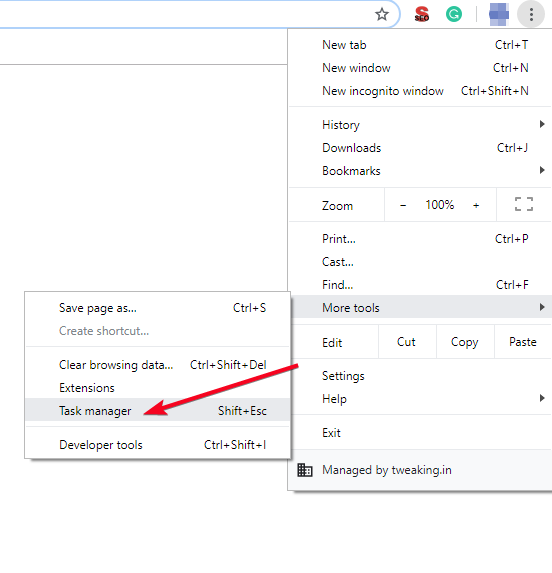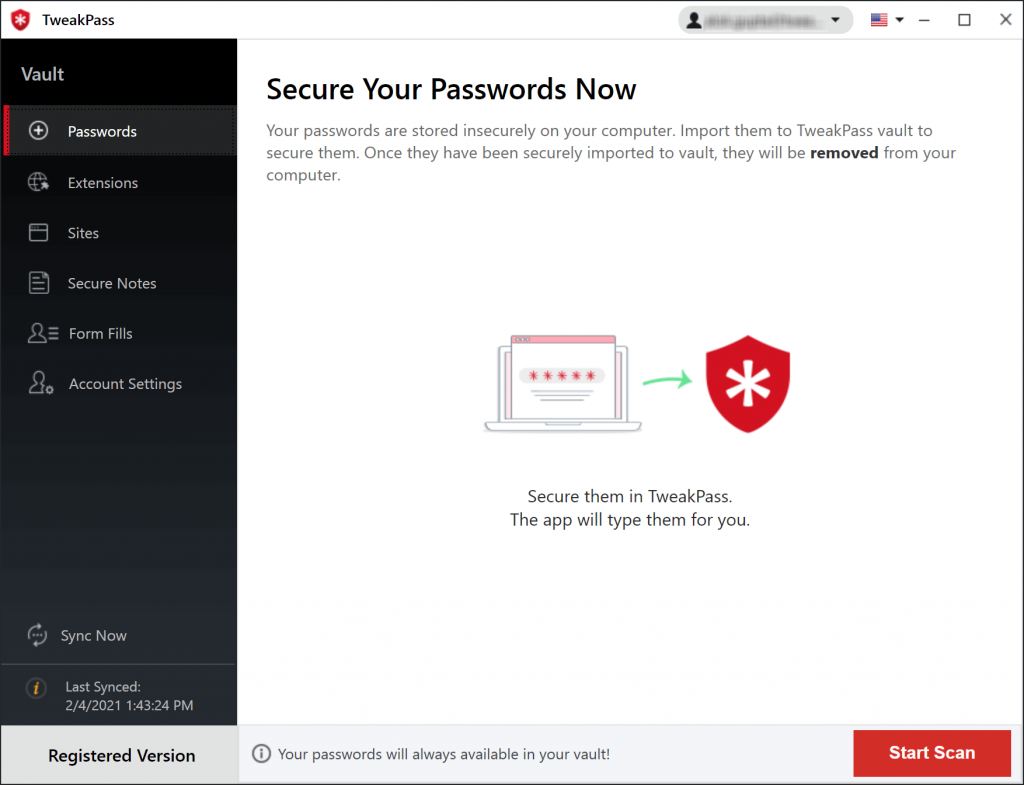Google Chrome is the most widely used browser, given its support for numerous extensions, speed, and well, the fact that it is a Google product. Since most people and corporations use G-Suite applications for all sorts of purposes, there is a preferred trend of using Chrome web browser as primary surfing platform.
Moreover, the syncing facility allows users to sync their Chrome account on the mobile phone with that of their desktops/laptops. This offers device flexibility and accessibility to search history and browser settings across the two devices. One of the best features of Google Chrome web browser is its in-built Chrome Task Manager.
Using Chrome Task Manager, users can control the processes and manage Chrome extensions running on Chrome in any session. By monitoring each process running on the browser, we can ensure better-browsing speed, prevent malware injection from malicious sites, prevent site crashes, and keep a check on browser extensions.
How to Open Chrome Task Manager in the Chrome Browser
Well, before you use Chrome Task Manager, you must find it within the Chrome web browser. Here’s how you can open the task manager on Chrome:
Step 1: Click on that three-dot button on the top right corner of the Chrome web browser window.

Step 2: There Click on More Tools. That would open a new side-column and click on Task Manager.
This is how your task manager would look:

Let’s learn how you can control the Chrome Web Browser using the in-built Chrome Task Manager.
Control and Manage Chrome Extensions and Browser Processes Using Chrome Task Manager
1. End Processes You Have No Use Of
There are tabs that you open up while working but then don’t use them for the entire browser session. You can manage these tabs and the associated processes using Chrome Task Manager. These tabs slow down the browsing speeds and hamper your session with browser crashes and slower loading speeds every new webpage.
To end the processes associated with these tabs, just left-click on the particular tab/extension and then click on End Process. For example, here, the LinkedIn tab is unnecessarily using the system memory, and I have no need for it. So, let’s just kill this tab.

Once the process is killed, the tab would stop loading the site at that very moment and would only start if you reload it. (see image below)

2. Manage Chrome Extensions via Chrome Task Manager
When you scroll down to the last of the few options in the in-built task manager of the Chrome web browser, you’ll see all the extensions you’ve added to Chrome. Here you can see what extensions are running on the browser and decide which one is necessary for your session. If you feel any of these extensions is taking up your browser speed, you can end it just like you stop the processes above. Just left-click on the extension and click on End Process.

3. View What Resources A Process is Using
The processes on the Chrome web browser use several system resources to run. This includes your GPU memory, RAM, and CPU Time. To view which of the resources the tabs or other process running on the Chrome web browser are using, just right-click anywhere on the Chrome Task Manager. The side column appearing next lists all the resources a tab is using.

The tasks with the check-marks ahead of them are the ones that are visible on the Chrome Task Manager. To view other resources on the Task Manager window, just select them. For example, let’s choose JavaScript Memory.
Once selected, the resource column would appear for every process running on that particular session on the Chrome web browser.

Also, you can sort the order in which processes are columned up on the Chrome Task Manager. For example, when you click on any of the column heads, for example, Memory Footprint, the order of that column would change to descending one. Therefore, the processes using the maximum memory would be on top, going down to the process using the least memory mentioned in the end. The order can be reversed to ascending by clicking on that particular column heading again.

4. Do not End Site Isolation Processes
Site Isolation is an added security feature added in Chrome web browser to prevent harmful damages caused by security bugs on different websites. Any website cannot access data of another website logged in to the same browser. However, security bugs can cause a breach in this security patch allowing sites to interchange data and communication. In such a scenario, a malicious website may attack other logged-in sites. Your credentials and passwords may be hijacked by malicious sites in case of any breach.
Site Isolation was introduced by Google in Chrome 67, under which every single webpage runs as a separate process. This prevents malicious sites from accessing site data as every webpage would be needed to be breached separately to do so. This, in turn, is rather a difficult task for malicious site handlers.

These processes can be seen clustered together in Chrome Task Manager, preceded by the heading Subframe. It is not recommended to end any of these processes. Chrome Web Browser automatically generates these sub-processes, and users are advised not to hamper them. They are for the additional security of your browser session.
5. Use Password Manager Tool to Avoid Hijacking of Credentials
Though the Chrome Task Manager allows you to have a transparent look at all the activities on your browser; however, it still doesn’t guarantee complete protection from hackers and identity thieves. The most common theft on Chrome is of saved passwords. Chrome’s password manager has been ineffective in securing your passwords and login credentials. These credentials are access to many online services you use. And you surely won’t like anyone getting them.
In such a scenario, it’s always healthier to use secure password manager applications.
TweakPass is one of the best password managers in terms of both ease-of-use and security. TweakPass allows users to save passwords of their multiple accounts (shopping, movies, food delivery, travel bookings) and lock them up in a secure vault in an encrypted format. The encryption of all the passwords is supported by SSL-protection embedded in Tweakpass. The You’ll be required to set a master password to access TweakPass vault, which gives you exclusive access to all your login credentials. Moreover, you don’t have to manually enter every credential. TweakPass would scan Chrome web browser for saved passwords and let you transfer them to the vault before you delete them.

Chrome Task Manager can be used to control browser activities and manage Chrome extensions. This Task Manager is effective in maintaining faster browser sessions and relive load off system memory. Despite site isolation, there are still possibilities of account hijacking. To prevent that you can always resort to TweakPass. This way, it combines Chrome Task Manager’s browser control techniques and TweakPass’s security and password protection. This would ultimately make your browser sessions more secure, fast, and smooth, thus providing for finest internet surfing.



 Subscribe Now & Never Miss The Latest Tech Updates!
Subscribe Now & Never Miss The Latest Tech Updates!